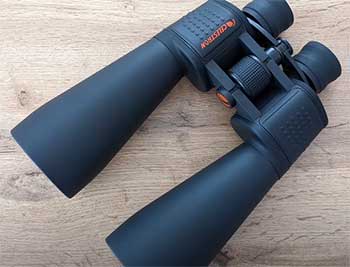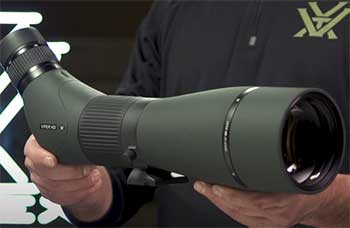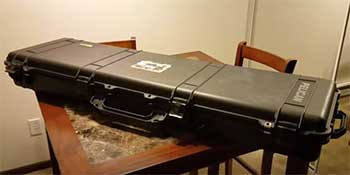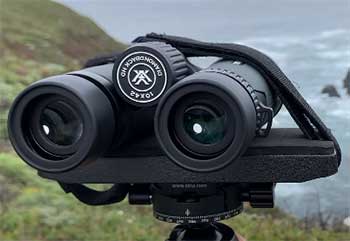Binoculars are an essential tool for activities like birdwatching, hunting, stargazing, and spectator sports. With so many options on the market, it can be tough to decide which brand and model is right for you. Two of the most popular binocular manufacturers are Celestron and Vortex.
But how do you choose between these two brands? Which is better for astronomy, birding, or other uses?
In this detailed comparison guide, we’ll break down the key factors you need to consider when choosing between Celestron and Vortex binoculars. We’ll compare optical quality, features, durability, price, and more.
We’ll also provide specific recommendations for the best Celestron and Vortex binoculars for different activities. Whether you’re a casual user or serious hobbyist, read on to find the perfect pair of binos for you!
A Brief Comparison Table
| Feature | Celestron Binoculars | Vortex Binoculars |
| Optical Quality | Excellent ED glass; fully multi-coated | Excellent ED glass; fully multi-coated or XR coated |
| Features | Water/fog proof; twist-up eyecups; some tripod adaptable | Water/fog proof; twist-up eyecups with stops; tripod adapter included; diopter adjustment |
| Durability | Decent water/shock resistance; average weight | Excellent water/shock resistance; lightweight magnesium alloy chassis; ArmorTek lens coating |
| Price | $$-$$$$ | $-$$$$; better value at each price point |
| Astronomy Use | Excellent, specialized in astro optics | Excellent, high-quality giant binocular models |
| Birding/Hunting Use | Good, quality optics but not as rugged | Excellent, lightweight and durable with top optics |
Key Differences Between Celestron And Vortex Binoculars
- Optical Quality
The most important factor in choosing any pair of binoculars is optical quality. Excellent optics provide bright, crisp, detailed images.
Poor quality optics will leave you squinting and struggling to see clearly. Let’s see how Celestron and Vortex compare:

Celestron
Celestron uses premium optics across most of its binoculars lines.
Most models feature extra-low dispersion (ED) glass elements which reduce color fringing.
Fully multi-coated lenses increase light transmission for brighter images.
Phase and dielectric coatings also improve contrast and resolution.
The result is excellent edge-to-edge sharpness and color accuracy.
Vortex
Vortex also prides itself on high-end optics using premium glass and coatings. ED elements are found on most mid-range and higher models. Fully multi-coated or XR anti-reflective coated lenses maximize light transmission.
Phase correction coatings provide high resolution and contrast. Overall, optical quality is outstanding, producing bright, detailed viewing.
Summary
When it comes to optics, Celestron and Vortex are neck-and-neck. Both use quality glass and coatings resulting in superb high-definition images across their binocular lines. For most users, optics will be excellent with either brand.
Also Read: Comparison of Fujinon And Canon Image Stabilized Binoculars.
- Features
In addition to basic optics, there are some other helpful features that may influence your buying decision. Let’s look at some of the extras offered by Celestron and Vortex.
Celestron Features
- Most models are waterproof and fog proof
- Twist-up eyecups for use with or without eyeglasses
- Tripod adaptable (tripod and adapter sold separately)
- Some models feature internal focus which keeps length constant when focusing
Vortex Features
- Fully waterproof and fog proof construction
- Twist-up eyecups with intermediate stops for eyeglass wearers
- Tripod adaptable using included adapter
- Diopter adjustment to fine-tune focus for each eye
- ArmorTek coating protects exterior lenses
Summary
Vortex pulls ahead slightly when it comes to extra features. The included tripod adapter and intermediate eyecup stops add nice convenience. Diopter adjustment also helps eyeglass wearers tweak the focus.
While basic, Celestron’s features get the job done for most users. But Vortex offers a few helpful enhancements.
- Durability
Binoculars take a lot of abuse when used in the field. Durability is especially important for activities like hiking, hunting, and birding. Let’s see how rugged Celestron and Vortex binoculars are:
Celestron Durability
Most Celestron binoculars offer reasonable durability:
- Waterproof and fogproof (nitrogen or O-ring sealed)
- Rubber armor for shock absorption and grip
- Decent weight but not overly heavy for their size
Vortex Durability
Vortex binoculars are exceptionally rugged:
- Fully waterproof and fogproof (O-ring sealed)
- Rubber armor with textured grip
- Lightweight magnesium alloy body chassis
- ArmorTek lens coating protects exterior lenses
Summary
Vortex is the clear winner when it comes to toughness. Their lightweight magnesium bodies can withstand more abuse than typical polycarbonate frames.
Rubber armor and ArmorTek coatings add extra shock absorption and protection. Celestron binos are decent but just not built as ruggedly as Vortex models.
- Price and Value
Of course, price plays a major role in any buying decision. Let’s see how Vortex and Celestron stack up in terms of value:

Celestron Pricing
Celestron binoculars range from $50 for basic compact models up to $1000+ for high-end astro binos. Mid-range models typically cost $200 to $500.
You’ll get good optics and features at each price point. Value is decent but not exceptional.
Vortex Pricing
Vortex binos start around $100 for cheaper models and run over $2000 for premium offerings.
Most enthusiasts will find great value in the $300 to $600 range. Considering the outstanding quality and durability, Vortex provides excellent value across all price tiers.
Summary
Vortex tends to provide better value, giving you more for your money. Their durable construction and high-end optics rival much more expensive brands. Celestron also provides decent quality at each price level but lacks the exceptional value of Vortex.
Celestron and Vortex Binoculars Compared
Now let’s take a detailed look at some of the top binoculars from Celestron and Vortex and see how they stack up:
Compact Binoculars
Celestron Outland X 8×25
- Compact and lightweight (12 oz)
- ED objective lenses
- Fully multi-coated optics
- Waterproof and fogproof
- Close focus under 6 feet
- 8x magnification and 25mm objectives
Vortex Vanquish 8×26
- Very compact (9.8 oz)
- Fully multi-coated lenses
- Waterproof and O-ring sealed
- 12mm eye relief
- 8x magnification with 26mm objectives
- Tripod adaptable
Summary
For compact binos, the Vortex Vanquish beats the Celestron Outland X. Vortex still provides excellent optics in a smaller, lighter chassis. The included tripod adapter also gives it added versatility.
Mid-Size Roof Prism Binoculars
Also Read: Comparison of Vortex And Swampfox Optics.
Celestron TrailSeeker 8×42
- Lightweight (23 oz)
- ED objective lenses
- Fully multi-coated optics
- Phase and dielectric coatings
- Waterproof and fogproof
- 8x magnification with 42mm objectives
Vortex Diamondback 8×42

- Compact and rugged magnesium chassis
- Fully multi-coated lenses
- Phase corrected roof prisms
- Waterproof/fogproof with O-rings
- 8x magnification and 42mm objectives
- Outstanding optics for the price
Summary
The Vortex Diamondback 8×42 beats out the Celestron TrailSeeker 8×42 on price, durability, and value.
The Vortex provides nearly equivalent optics for generally less money in a lighter yet tougher chassis. The Celestron does have slightly better coatings however.
High-End Astro Binoculars
Celestron SkyMaster 25×100
- Huge 100mm objective lenses
- Multi-coated optics with ED elements
- Excellent light transmission
- Built-in tripod adapter
- 25x magnification for lunar and planetary viewing
Vortex Ultra Wide 25×100
- Massive 100mm objectives
- Dielectric prism coatings
- XR anti-reflective lens coatings
- Retractable eyecups
- Built-in tripod mount
- 25x power for deep space viewing
Summary
For premium astro binos, the Vortex Ultra Wide 25×100 competes strongly with the Celestron SkyMaster 25×100. Both provide incredible magnification and light transmission, with excellent optics.
The Vortex stands out mainly for its rugged magnesium construction. But performance is comparable.
Which Is Better For Astronomy?
For astronomy, the most important factors are large objective lens size along with high magnification. Both Celestron and Vortex offer excellent large-aperture astro binos.
Celestron has long specialized in astronomical optics so their SkyMaster line is superb for deep sky viewing. Vortex also produces high-quality giant binos like the 85mm and 100mm Ultra Wide models.
For casual stargazing, mid-size Celestrons like the TrailSeeker or larger Vortex Diamondbacks work well. Serious hobbyists will want the biggest objectives possible from either brand. You really can’t go wrong with high-end astro binos from Celestron or Vortex.
Which is Better for Birding & Hunting?
Birdwatchers and hunters need bright optics, good portability, and durability. Most prefer mid-size 8x or 10x binos for adequate magnification along with field of view. Durability is essential when using binoculars in rugged outdoor conditions.
For birding and hunting, we give Vortex the edge over Celestron. Models like the Diamondback HD and Viper HD provide outstanding optics in lightweight magnesium chassis. Fully waterproof construction and ArmorTek lens coatings also add protection.
The ergonomic design and ruggedness make Vortex a better choice for active use.
That said, many birders and hunters are happy Celestron users. Models like the TrailSeeker or Nature DX will work nicely. We just think the better durability and optics of Vortex make their binos a wiser investment for the outdoors.
Also Read: Comparison of Leupold And Vortex Diamondback Binoculars.
Frequently Asked Questions (FAQ)
Yes, Vortex binoculars are very high quality overall. They utilize premium glass, coatings, and construction that rival far more expensive brands. Even mid-priced Vortex binos provide exceptional optics and durability.
Absolutely, Vortex binoculars provide outstanding value. Their combination of quality components, durable build, and reasonable prices make them worth the investment. You’d have to spend much more to get comparable performance from other major brands.
Yes, Vortex makes excellent astronomical binoculars. Their large 85mm and 100mm models like the Ultra Wide provide impressive views of the night sky. Casual stargazers will also be happy with mid-size Vortex models.
Vortex binos are an excellent choice for birding. Lightweight chassis, comfortable design, and bright high-resolution optics make them ideal for spotting birds. Durable waterproof construction also handles rugged outdoor use.
Conclusion
Celestron and Vortex both make high-quality binoculars well-suited for a variety of activities. While Celestron has great options for astronomy, we think Vortex pulls ahead for most uses.
Their combination of top-tier optics, durable build, features, and value make them the better all-around choice for birding, hunting, sports, and even casual stargazing. Whichever you choose, you really can’t go wrong with premium binoculars from Celestron or Vortex.
Just match your specific needs and budget to choose the right model. Happy viewing!

